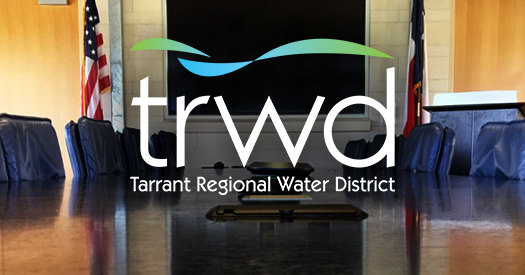
TRWD is co-hosting a training that will focus on the nature and function of stream and riparian zones and the benefits and direct impacts from healthy riparian zones. The riparian education programs will cover an introduction to riparian principles, watershed processes, basic hydrology, erosion/deposition principles, and riparian vegetation, as well as potential causes of degradation and possible resulting impairment(s), and available local resources including technical assistance and tools that can be employed to prevent and/or resolve degradation.
Co-hosts include the City of Corsicana, the AgriLife Extension Office in Navarro County and the Texas Water Resources Institute.
Richland-Chambers Lake watershed is located southeast of Dallas and encompasses almost 2,000 square miles. Similar to many reservoirs in the state, water quality in Richland-Chambers is affected by nutrient and sediment runoff from the watershed, which boosts algae growth and decreases water storage. TRWD is working with Texas A&M AgriLife Research to develop a stakeholder-driven watershed protection plan (WPP) to address water quality concerns.
These one-day trainings in watersheds across the state include both indoor classroom presentations and outdoor stream walks. Instructors are experts from Texas Parks and Wildlife Department, USDA Natural Resources Conservation Service, Texas A&M Natural Resource Institute, Texas Water Resources Institute and Texas A&M AgriLife Extension Service.
The goal is for participants to better understand and relate to riparian and watershed processes, the benefits that healthy riparian areas provide, and the tools that can be employed to prevent and/or resolve degradation and improve water quality. At the conclusion of the training, participants will receive a certificate of completion.
Continuing Education Units Available:
- Texas Department of Agriculture Pesticide Applicators License – 3 CEUs
- Texas Water Resources Institute – 1 CEU
- Texas Nutrient Management Planning Specialists – 6 hours
- Texas Forestry Association – 6 hours
- Society of American Foresters – 4 hours
- Texas Floodplain Management Association – 7 CECs
- Certified Crop Advisor- 7 CEUs (Nutrient Mgmt: 1, Soil & Water: 1.5, IPM: 1.5, Crop Mgmt: 2.5, Manure Mgmt: 0.5) (NEW)
- Texas Board of Architectural Examiners “Acceptable for HSW credit”
- The program may also be used for CEUs for Professional Engineers.
- Check with your Chapter for Master Naturalist and Master Gardener to see if it is approved for your area.
RSVP is required by Friday, September 14, 2018. RSVP online through the TAMU marketplace link or by email to clare.entwistle@ag.tamu.edu. This workshop is free because the program is funded through a Clean Water Act grant provided by the Texas State Soil and Water Conservation Board and U.S. Environmental Protection Agency.
A catered lunch sponsored by Tarrant Regional Water District is available for participants or participants may select to bring their own lunch. Please make sure to choose your lunch option during the RSVP process.
Dress is casual and comfortable for the weather as we will be outside along the banks of a nearby creek during the afternoon.
For more information or questions, please contact Clare Entwistle at 210-277-0292 x205 or clare.entwistle@ag.tamu.edu
Please join our listserv or like us on Facebook for more information on future programs!
The riparian education program is managed by the Texas Water Resources Institute, part of Texas A&M AgriLife Research, AgriLife Extension and the College at Texas A&M University


